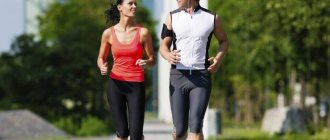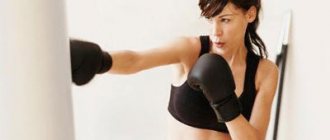Anyone can run
And it is true.
However, it is important to know the right running intensity that is right for you and will be beneficial for your health. But everyone understands intensity differently, and choosing the right amount of training is not easy. Before you start running, you need to undergo two key medical examinations that will allow you to understand the capabilities and reserves of your specific body. And then, based on these data, build the intensity of running training.
When determining the intensity of running, it is important to look at the capabilities of the musculoskeletal system, cardiovascular and respiratory systems of the body. All this can be determined using biomechanical and functional diagnostics.
How does overtraining happen? A person, unnoticed by himself, rejoicing that running is easy, begins to increase the load each time.
– Sleep disturbance: difficulty falling asleep, interrupted sleep. This condition is also accompanied by mild excitability.
- Loss of appetite: I don’t feel like eating. Or vice versa – a constant desire to eat something.
- Resting heart rate is above 75 beats per minute.
- Aching local pain in the joints (knee or foot) after a short run.
- Abnormal blood pressure – above or below normal.
If you find these symptoms in yourself, then rest for 3-4 days. All symptoms have passed and you can return to running. The symptoms have not disappeared - you need to go to a specialist.
If you are concerned about your heart rate after a run, then it is better to contact a sports cardiologist, because they have different criteria for assessing the state of the cardiovascular system of runners than a regular doctor. Often alarming indicators of heart function for a person who does not lead an active lifestyle are the norm for an athlete and are not dangerous to health.
For those athletes who can visit a professional sports clinic and see specialists, it is recommended that once a year they do a comprehensive diagnosis of the functioning of the entire body, especially the cardiovascular system. There are such centers in Moscow and St. Petersburg.
Running practice
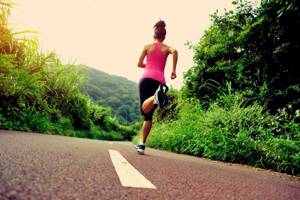
For running to improve your health, you must include the following exercises:
- start – a light jog to warm up;
- warm-up – exercises for flexibility and stretching of the main joints;
- several strength exercises on the limbs;
- stretching all muscle groups;
- directly running;
- stretching and relaxing all muscles involved.
You need to run with a break between meals of at least 30 minutes before or after. To improve your health, you need to run in places with minimal air pollution.
Don't overdo it while running. Overtraining can cause even more harm than not training. The main parameter for determining over- or undertraining is monitoring one’s own well-being. You should also monitor your pulse, the frequency of which should not exceed 100 beats per minute.
Harm to the musculoskeletal system
Both long runs and short distance running can have a negative impact on the spine and joints of the lower extremities. Running is one of the most accessible sports that does not require financial investment. I wanted to, by a strong-willed decision I put a run in my diary and start healing the whole body, at the same time cheap and cheerful.
When running, the impact load on the musculoskeletal system increases 7 times compared to walking at an average pace. Incorrect running technique increases the load on the knee joints and ankles and promotes lateral displacement of the vertebrae. This increases the risk of microtraumas of cartilage and intervertebral discs, which, in turn, leads to arthrosis and arthritis.
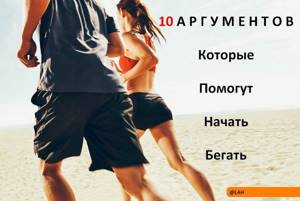
This begs a reasonable question: is running beneficial or harmful? Undoubtedly, physical activity is useful, but only if you follow the running technique. At the same time, equipment for training is important. A tracksuit should not restrict movement, and sneakers should be chosen with shock-absorbing soles, which reduces the impact load on the joints and spine.
Why does your heart hurt when running and what to do about it?
Heart pain when running is mostly pathological. Most often, such sensations can occur due to myocardial circulatory insufficiency. If you experience discomfort in the chest, you should stop physical activity, restore breathing and immediately consult a doctor.
The screening method in such a situation will be electrocardiography and ECHO-CG (ultrasound of the heart). Of course, when such complaints appear, it is better to supplement the examination with stress testing, since at rest there may not be any changes in the electrocardiogram.
The benefits and effects of running on the body
Running is the simplest and most effective physical exercise that allows you to use almost all parts of the ligamentous and muscular system. In addition, the joints of the human body also receive a useful load while running. Running increases blood circulation, saturates all organs and tissues with oxygen. It trains the vascular system and prevents many heart diseases.
Jogging helps cleanse the body of harmful toxins and waste. During exercise, blood begins to move through the vessels with high intensity. Through the walls of blood vessels, many waste substances enter it, which are eliminated through sweat. With slow, long running, the body's metabolic processes are normalized, and the cholesterol level in the blood decreases.
Jogging helps you get rid of extra calories. No wonder running is considered one of the most effective ways to lose weight and is included in most weight loss programs.
According to scientific research, running promotes the production of endorphins - hormones that make a person feel joy, happiness and optimism. In addition, running increases a person's endurance, making him more efficient.
Regular running training improves the body's recovery functions. This effect will be especially useful for people who often work night shifts. As a result, a short run turns out to be more effective in invigorating than a relaxing rest or even sleep.
Studies have shown that almost 70% of men who started running regularly have improved reproductive system activity. In other words, running can also enhance male potency.
It is an established fact that jogging has a positive effect on the nervous system. A person for whom running has become a daily norm of life becomes less hot-tempered and more balanced, he controls his emotions more effectively and tolerates stressful situations more easily. For many people, running helps reduce depression or get rid of it completely.
It has been proven that jogging has a positive effect on a person’s mental abilities, as it increases the level of concentration, self-control and brain activity. Running can also provide invaluable help with various sleep disorders, as it has a calming effect on a person’s emotional and psychological state.
We must not forget that running is an excellent tool for increasing physical strength and endurance. With the help of running, the muscles of the legs, abs, arms, neck, and buttocks actively develop. A person becomes more dexterous and stronger.
While running, our body gets used to consuming less oxygen. And this is very useful for us. A large amount of oxygen for the body is poison. The body burns out quickly. When a person runs a lot, the amount of oxygen consumed is reduced, and thus we extend our life.
2-month online course “How to start running and not quit”Make running a habit for life!
If we regularly run, our capillary network gradually, over the course of two to four years, begins to grow, blood supply improves, and then the functioning of all muscles and internal organs.
When jogging, qualitative changes occur in the musculoskeletal system. Cartilage and bone tissue become more prepared for stress, and muscles become more adapted to physical activity. All this prolongs the good condition of the whole body, which will subsequently make it possible to feel healthy and vigorous after 70, 80 and even 90 years.
An important and, probably, one of the main points in the list of beneficial properties of running for amateurs is anti-stress therapy. When jogging at the right intensity, excess adrenaline and cortisol are burned in the body. This is important in order not to overload the cardiovascular system. For city dwellers, low-intensity running is the path to a healthy, comfortable and long life.
There are also benefits from running in relation to metabolic processes in the body. They increase and are activated, which leads to positive adaptive changes in the body, including the burning of excess fat deposits.
If we talk about blood pressure, a number of studies have been conducted that have proven that low-intensity running training normalizes blood pressure and is indicated for both hypertensive and hypotensive patients. But it is important to understand that intense (interval, tempo) training and participation in competitions lead to an increase in blood pressure, an increase in the tone of blood vessels, respectively, that is, before you start running in high pulse zones, you need to equalize the pressure so as not to create a threat to your heart rate. -vascular system at the time of peak loads.
Structural and functional changes in the body under the influence of running
Functional and morphological influence of running on the body Running can give a person incredibly many useful qualities. No wonder the ancient Greeks said: “Do you want to be strong? Run! Do you want to be beautiful? Run! Do you want to be smart? Run!” With the help of running, you can seriously improve several functional qualities. Let's start with colossal endurance. Regular running for medium and especially long distances significantly increases the ability to withstand long-term moderate loads. And this is due to two factors.
Training the heart and increasing the vital capacity of the lungs (VC).
However, the predominant factor is the development of the heart muscle.
You could say that running is a workout for the heart. This organ consists of muscle tissue. And like any muscle, it reacts to periodic loads with functional and morphological changes. Physiologist F.Z. Meyerson called this property " structural trace ." Such a mark is nothing more than the result of the organ’s adaptation to stress. In 1899, the medical concept of “ athletic heart ” was even introduced. Another researcher G.F. Lang (an outstanding Soviet therapist) in 1938 summarized the criteria for a sports heart, emphasizing that, as part of adaptation, such a heart brings only benefits to the body.
However, it is worth saying that sometimes the physiological adaptation process can turn into a pathological process (with illnesses, irregular excessive loads, etc.). The athletic heart is characterized by an increase in the volume of the organ as a result of myocardial hypertrophy and dilatation (expansion) of the cavities. A powerful, “springy” pulse and bradycardia at rest (heart rate less than 60 beats per minute) are also noted. Normally, an athletic heart spends a minimum of energy at rest. But under the highest loads it can maintain the body at its peak for quite a long time.
How does heart training occur? Running for medium and long distances refers to isotonic, dynamic loads. They contribute to constant pressure on the vessels in the working muscles. This leads to increased blood flow and decreased systemic vascular resistance. As a result, blood vessels dilate (vasodilation) in the trained muscles. In this case, these are all the leg muscles, intercostal muscles, and back muscles. And, of course, the heart. Much more blood is transported to the heart than normal.
This leads to its stretching. There is the so-called Frank-Starling law, according to which a muscle contracts more and more if it is stretched to a certain threshold (35% of the muscle length). As a result, the stretched heart begins to make more powerful movements. The amplitude of acto-myosin complexes (the contractile apparatus of any muscle cell) becomes several times higher. Considering that more oxygen-enriched blood comes in and is pushed into the body much more strongly, the number of heartbeats necessary for the body to function is noticeably reduced.
Stretching and dilatation of the cardiovascular system are characteristic of dynamic loads (running, swimming, cycling, skiing, etc.). Therefore, in long-distance runners, the volume of the heart increases mainly due to dilatation of the cavities, and not due to hypertrophy of the myocardium itself. The growth of cardiac muscle mass under such loads is either very moderate or completely absent. Teleradiometric studies show that in an untrained healthy man, the cardiac volume, according to statistics, is about 760 cubic cm. In a woman, it is 600.
For athletes and sportswomen, this figure can increase by 200 or 300 cubic cm. However, there is also a physiological limit here - 1200, maximum 1300 cubic cm. If medical studies show a higher heart volume, then even for professional athletes this is a serious reason be tested for various pathologies of the cardiovascular system. After reading all this, you can ask yourself: how does the performance of the heart itself increase? Capillarization plays a key role here. Exertion means an increased need for oxygen.
Consequently, gas exchange becomes more active. And gas exchange occurs only in a small capillary network, which supplies tissues with oxygen and nutrients. Larger vessels perform exclusively a transport function. It was said above that the blood flow channel expands under dynamic loads. Consequently, the movement of blood slows down. This allows more oxygen to be delivered to muscle tissue. The high demand for this oxidizing agent leads to an interesting effect. New capillaries open. The channel of existing ones does not expand (as in large vessels), but new ones appear.
The capillary network of the myocardium becomes denser. Thanks to the process of capillarization, the heart opens up functional potential that was previously inaccessible. Training the heart makes it possible to train all other working muscles in a similar way. Pumping the intercostal muscles allows you to more strongly change the volume of the chest. And regular high oxygen demands stretch the alveoli. As a result, vital capacity changes. Vital capacity is the volume of air that a person is able to inhale with maximum effort.
You can inhale first through your nose, and then “swallow” some more air through your mouth. The main thing is that there is a feeling that the chest is completely full. And it is unable to accommodate even one extra cubic centimeter of gas. Various versions of a device called a spirometer are used to measure breathing capacity. In untrained healthy people, vital capacity varies by gender and age. In men aged 25 years, vital capacity is slightly more than 4 liters.
For women, this figure is about a liter less. However, regular aerobic sports activities can increase vital capacity by 1, 2, even 3 liters! Vital vital capacity is the most important criterion for high functionality of the body. The chain is simple. More air, more oxygen, higher oxidation processes of ATP, fatty acids, glycogen and glucose. Consequently, the energy is released longer, and its quantity is greater. When running long distances, red muscle fibers (RMF) work.
Different types of muscle fibers in the context of running
They are characterized by a small amplitude of contraction of acto-myosin complexes, but they can work for a very long time. The main source of energy for their work is ATP and glycogen (“firewood” of the body). Actually, these substances are the main source of energy for all types of muscle fibers. However, the processes of their oxidation are in balance with the processes of their reduction. But the material for replenishing ATP and glycogen, as well as the replenishment mechanism itself, is different in different muscle fibers.
CMVs are called red because of the protein myoglobin, which acts as an additional analogue of hemoglobin. After all, here the source of replenishment of “firewood” is fatty acids and carbohydrates, and the mechanism is strictly aerobic (the oxidizing agent is air oxygen). But it is important to know that endurance does not increase by increasing the number or development of this type of fiber. The relationship between different types of muscle fibers is determined at the genetic level. The overall endurance that middle and long distance running develops increases due to heart training, capillarization and an increase in vital capacity.
Endurance is a useful quality in itself. And in many sports it is practically impossible to do without it. Running, swimming, skiing and cycling - all of these sports require excellent general endurance from the practitioner. In boxing and martial arts, the ability to withstand a load is also very useful. In Kyokushinkai karate, a master who does not have excellent endurance will never pass the “100 fights” test. Because the minimum travel time will still be somewhere around two hours.
There is nothing to say about professional boxing, where a fight can drag on for 12 rounds. Of course, endurance has its physiological limits. How many people can run completely without stopping? The marathon is a very, very serious sports test. Because the first 30 kilometers are difficult to run, but possible. And somewhere after 30 km, the body almost completely runs out of glycogen and carbohydrates. And that's it - a wall. It’s not for nothing that a marathon without time is awarded the third adult category in athletics.
It will take too long for glycogen to be synthesized from the fat layer. This mechanism is not suitable for quick replenishment. Therefore, experienced runners recommend sweets and complex carbohydrates the day before the marathon. Marathon runners say that you run on what you ate yesterday. Running can develop another important quality - explosive leg strength. But long-distance running won't help much here. Since white muscle fibers (WMF) are responsible for explosive power and speed-strength qualities. They are much thicker than the red ones, and the amplitude of their contraction is much higher.
Features of speed running and muscle testing
Here, ATP is restored due to the oxidation of creatine phosphate and glycogen. Only oxidation is anaerobic, i.e. without oxygen (glycolysis). This type of oxidation is much less energetically efficient. In addition, lactic acid quickly accumulates in BMWs because of this. As a result, BMWs are distinguished by the fact that they can produce very great physical strength, but for a very short period of time. If CMVs are practically incapable of growth, then in the BMW, due to regular powerful loads, new complexes of contractile proteins (actin and myosin) are formed.
Therefore, here the increase in functionality is associated precisely with changes in the muscle fibers themselves. In terms of running, the BMW is best developed by the 100-meter race, which everyone knows from school, as well as running up steep hills and running with obstacles. For those who don't know. The 100-meter dash is when a person runs 100 meters at the maximum speed possible. You just need to start the hundred-meter dash after a warm-up warm-up (warm-up run of one or two kilometers).
After all, with such running, ligaments, muscles and tendons experience enormous stress. From the very beginning, speed-power running requires at least minimal physical training, high-quality sports shoes and a flat, non-slippery surface. It is believed that a young man with basic training can run 100 meters in 14 seconds. Woman - in 16 seconds. Probably no one will argue that the ability to run fast has never hurt anyone. In addition, the 100-meter dash pumps up the calf muscles and quadriceps femoris just as well as a gym machine.
This is useful for those who practice biking with a lot of kicking. Perhaps someone has a question. What muscle fibers work during a 3 km race? Three kilometers is a distance that you cannot run at full speed. But trained runners will not jog in this case. Usually, a fairly high running pace is chosen, but with a small reserve of endurance. With this type of load, intermediate muscle fibers come into play.
These remarkable structures have properties of both CMV and BMW. The problem is that the percentage of their content is almost always small. Therefore, during a 3 km race, muscle fibers of all types are partially activated. If you can run 3 km in 13 minutes, consider that your basic training is excellent. The muscle structure is characterized by its mosaic pattern. Those. In each part of the body, a certain type of muscle fiber predominates. For running, the main muscles are the legs. You can find out in advance which fibers you have in your legs.
To do this, you need to perform a test exercise on a leg press machine. After warming up, begin performing sets with a small number of repetitions (up to 9 times), resting 5 minutes between sets. For each subsequent approach, increase the weight by 15% and reduce the number of repetitions. And so on until you reach a weight that you can cleanly take only once. Then rest for 10 minutes, and then take 80% of this last, maximum weight. If you were able to lift this new weight up to 7 times, it means that BMWs predominate in your legs. You have the potential to sprint.
With all the consequences. If up to 12 times, it means you have approximately equal numbers of KMV and BMW. And a lot of intermediate fibers. You can achieve high results at medium distances. If you were able to press the new weight more than 16 times, then you are a potential marathon runner. Because you have a lot of CMV in your legs. As already mentioned, the fiber ratio is determined at the genetic level. But the specifics of training can shift this balance slightly in the appropriate direction. However, the shift will not exceed 10% of the number of fibers.
Running is both an important independent sports discipline and a valuable applied part in other sports. In the same martial arts, there is nowhere without general physical training (GPP). And general physical training is not general physical training without running. Actually, running is the “bread and salt” of almost any workout. Even speed-strength exercises cannot be started without first warming up by running. Running is also a powerful means of healing .
Harm to the heart and blood vessels
The myocardium is the most trained muscle in the body. However, under excessive stress, the heart may not cope. It is necessary to increase physical activity gradually as your cardiovascular endurance increases. Otherwise, the myocardium does not have time to pump blood throughout the body, which causes tissue hypoxia, primarily the brain. The blood vessels and cavities of the heart dilate compensatoryly. This leads to rapid progression of heart failure.
In addition, in mature and old age with atherosclerotic vascular damage and an increased risk of thrombosis, jogging is contraindicated. During intense physical activity, an atherosclerotic plaque or thrombus can break off and lead to serious consequences: stroke, heart attack, thromboembolism of the branches of the pulmonary artery. This is why running without preliminary diagnosis and medical supervision is harmful.
Running is bad for your heart
With irregular training, a person's heart undergoes a reboot. Let's remember the cases when physical education teachers in schools force people to take endurance running without having previously carried out constant preparation for passing the standard. Almost every unprepared child begins to hold his side while running, gasp for breath, and feel a pang in his heart. But every unprepared adult encounters a similar problem. The fact is that the heart muscle does not have time to pump the required amount of blood, hence the lack of oxygen (hypoxia) and dilation of the heart vessels. Therefore, you should start with light but regular training, gradually increasing the load. It is then that the heart muscle will gain tone, and you will prevent the earlier occurrence of cardiac diseases.

Diagnostics is everything
Why is it important to conduct a diagnosis before starting running? Because we must identify our weakest point. According to the law of the weakest link in the chain, the maximum strength of the chain is equal to the maximum strength of the weakest link. The same can be said about the capabilities of our body. Our running intensity, which will be harmless to health, should be at the level of our weakest link in the body.
The weak link can be both in the musculoskeletal system and in the cardiovascular system. And, based on the diagnostic data, we build the running intensity. By the way, with the help of a properly selected running load, you can not only maintain your health, but also strengthen your weak links.
If it is not possible to contact a professional sports doctor and use special equipment for diagnosis, it will be enough to visit a therapist before starting classes and undergo a medical examination, which includes detailed blood tests and a visit to a cardiologist.
How the heart works
The main organ of the cardiovascular system consists of two atria and two ventricles. Therefore, the human heart is called four-chambered, because it consists of 4 blood cavities. When the left ventricle contracts, it releases oxygenated blood into the peripheral organs of the circulatory system (arteries, vessels, capillaries). The right ventricle receives blood that has completed its circulation and needs to be replenished with oxygen. That is, the function of the right ventricle is to interact with the lungs.
The work of the heart consists of 3 simple phases:
- Contraction of the atria. The duration of the contraction is 0.1 seconds. At this moment, there is an increase in pressure in the atria, while the ventricles are relaxed. The difference in pressure allows blood to flow from the atria down to the underlying ventricles.
- Then the atria relax for 0.7 seconds. While the pressure in the ventricles, on the contrary, increases, which allows blood to flow into the aorta and artery.
- After the first two phases there is a cardiac pause, which lasts about 0.5 seconds. The duration of the pause depends on the fitness of the heart.
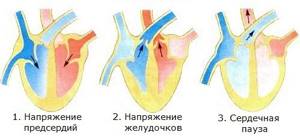
If you put your hand on your heart and listen carefully, you can feel two beats in one instant. This occurs due to the contraction and relaxation of the heart muscles.
The heart runs on electricity. Inside the main organ of the circulatory system there are many electrical endings that are necessary to stimulate contractions. Thus, we can say that the heart is dependent on “batteries”.
Harm from obesity
Overweight and obesity, oddly enough, are not a reason to start active jogging. Recent scientific studies have proven that heavy body weight during physical activity destroys joints, ligaments, and bones, but does not effectively reduce body weight.
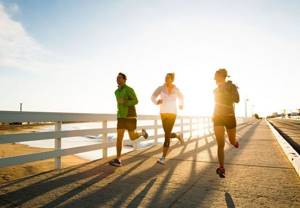
Let me give you a clear example. The average calorie content of milk chocolate is 500 kcal. Jogging burns approximately 350 kcal in an hour. This means that the effectiveness of such exercises for weight loss is highly questionable. It’s another matter if intense running is used (for example, covering 100 meters in the shortest possible period of time), but this technique is practically not used during training.
What to consider when planning your workouts
First of all, before starting jogging, you must undergo a medical examination and establish the level of so-called “initial health.”
It is also very important to monitor your heart rate during exercise. By your heart rate you can judge the intensity of physical activity for your body. The most accurate pulse zones for constructing the training process can be determined using treadmill testing with gas analysis and blood sampling.
This test will show such important indicators for runners as maximum oxygen consumption (VO2) and anaerobic metabolic threshold (ANT). Based on these indicators, one can judge the athlete’s fitness, and with further repeated testing, evaluate the effectiveness of the training process.
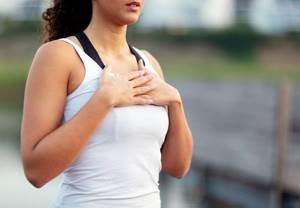
Three criteria for healthy running
Evgeny Kadlubinsky also recommends taking into account three main criteria by which you can determine your body’s readiness for running.
If you can speak calmly while running without shortness of breath, then most likely you have chosen a safe pace for yourself. You are running in heart rate zone 1 or 2. And these are safe areas for long-term work.
If you are running and your breathing is even, you can breathe through your nose - this is another signal that your pace is safe for your health.
This also means that you have received the optimal running load. If these three criteria are met and you feel good, then your running pace is relatively correct.
If you have already successfully run for a long time, this does not mean that you do not need to control your body. It is very dangerous to overtrain here, and then running will not benefit your health.
Prevention of cardiovascular diseases
Healthy people of any age can benefit from jogging to prevent cardiovascular diseases. Running is not difficult, but there are certain recommendations that you need to follow.
- It's better to run in the morning. Most people prefer evening jogging - waking up an hour earlier before a hard day of work is difficult. But try to go to bed early the day before and start the day with running - in a month you will notice how much more alert and resilient you have become
- It’s ideal if you can eat some fast carbohydrates for breakfast first. For example, banana. And in half an hour we go to the stadium. Carbohydrates will provide the energy needed for active exercise, but will be completely consumed without being converted into fat.
- And for overweight it is better to run on an empty stomach. Then the fat-burning effect will intensify - the body will have nowhere to take energy from, it will begin to “drown” fat.
- Start with a warm-up. It consists of two stages - warming up the joints, back muscles, neck and warming up the heart. First, walk around the stadium at a brisk pace (2-3 laps), then thoroughly stretch your entire body. Perform neck turns and torso bends. Warm up your knees, hips, stretch the muscles of your legs and back. It is important! Warm-up prepares muscles and joints for training, helps to avoid injuries and severe post-workout pain due to unfamiliarity.
- Increase the load gradually. The heart muscle, like any other, needs to be loaded to strengthen it. But it’s better not to rush - start with short, slow runs. First, you need to work on your endurance and increase your workout time by 5 minutes every day. When you can jog for at least half an hour straight without stopping, you can begin to increase your speed. And when the body gets used to fast half-hour running, start interval training (alternating load, intensity, speed)
- Run correctly - step from heel to toe. A beginner mistake is to step on the toe first, then the heel. It is not right. It’s difficult to relearn, so try to control your movements from the very beginning
- Carefully monitor your posture - your back should be straight, your shoulders should be straightened, your chin should be raised. The back, shoulders, and arms also work during jogging, so it is important to keep them in the correct position
- Avoid sudden, intermittent movements. Try to run at the same rhythm, take the same steps, keep the speed at the same level
- Running clothes should be made from natural fabrics. During a run, the body sweats a lot. It is important that the fabric absorbs moisture and does not accumulate it on the body, which can lead to hypothermia. During the cold season, dress as warmly as possible for a run. Even if it gets hot while running, don’t take off your jacket - you’ll get sick
- Running shoes should have a small platform and a sole that is soft enough to provide good cushioning. The runner's legs should seem to spring from the ground. Shoes with flat, excessively hard soles are not allowed - you can injure your knee joints

It is important
Conclusion: running is an excellent means for preventing diseases of the cardiovascular system and strengthening the heart muscle. But if you already have heart disease, jogging is not recommended - there is a risk of overloading the person’s main organ. Therefore, be sure to consult your doctor before starting classes. Choose the right clothes and shoes, watch your running technique, and increase the load gradually.
Harm of early and late classes
There is still debate among doctors about why running in the mornings and evenings is harmful. Some of them argue that it is necessary to study in the evening, others advocate morning classes. In the evening, the human body prepares for natural rest, and stress can worsen sleep and overall well-being. In the morning, the body just begins vigorous activity and tolerates stress as if it were a stressful situation.
Scientists have come to a consensus that exercise time depends on a person’s biological clock. “Larks” are comfortable studying in the mornings, and “night owls” in the evenings. But there is a mandatory condition, failure to comply with which can worsen your health. In the morning you can start training 4 hours after waking up, and in the evening 2 hours before bedtime. If you feel unwell for various reasons, it is recommended to postpone classes.
The benefits of running for individual organs
We must not forget that running is an excellent tool for increasing physical strength and endurance. With the help of running, the muscles of the legs, abs, arms, neck, and buttocks actively develop. A person becomes more dexterous and stronger.
The first thing that affects the quality of a run is the athlete’s condition. If you are a morning person, then getting up an hour or two earlier is not a problem for you. But with a predominantly nocturnal lifestyle, getting up in the morning does not bring pleasure; the body is weakened and not ready for physical activity. If you can’t change your schedule, then don’t torture yourself. For the rest, we’ll tell you about the changes you will feel after the first two weeks of exercise:
- Discipline. Any sports training at the same time leads to self-discipline.
- Health. An athlete’s circulatory system works much more efficiently, the heart muscles are strengthened, the risk of heart attack and stroke is reduced, and thanks to fresh air, lung capacity increases. Immunity also improves, and acute respiratory infections and colds are less common.
- Energize throughout the day.
- Endurance – after cardio training, strength exercises are better tolerated.
- Increased appetite for those who have problems with it. In general, metabolic processes are normalized. If the metabolism is too high, it becomes lower, otherwise it becomes higher.
- Losing weight. Cardio exercises are considered the most effective for this purpose.
We invite you to familiarize yourself with the benefits of parsley for men, products for potency.
However, there are features for the female and male body.
The following is important for girls:
- Dopamine is produced - the hormone of happiness, so you will be charged with a positive mood all day long. This will reduce your cravings for sweets.
- Beautiful, clean, tightened skin. A flushed face is a sign of intense blood flow. Such good blood circulation leads to the fact that every cell is saturated with oxygen and nutrients and is renewed.
- No stress, the nervous system calms down.
- Rejuvenation of the body, including the reproductive system. It is also associated with the influx of blood cells into the pelvic organs. Light jogging is especially recommended for women during menopause.
- Slimness - for a girl it is very important to give the body shape and elasticity, but not to make the figure masculine. Unlike strength training, cardio training gives overall muscle tone, evenly distributing the load.
In addition to the above points, which are also characteristic of the stronger half, there are features characteristic only of guys. Scientists have proven that with this type of load, hormones are produced that increase potency. The result is increased sexual desire and good erection. This is ensured not only by hormonal levels, but by increased blood circulation.
Strengthening blood vessels is the main prevention of early impotence, and supplying the body and brain with oxygen leads to the active work of brain centers that affect libido.
Harm to women
Regular jogging can cause deterioration in breast shape and cellulite. To securely fix the mammary glands during training, you need to wear special supportive underwear and the problem will be solved. As for cellulite, this statement is confusing. Many people run precisely to get rid of the “orange peel” on their thighs and buttocks.
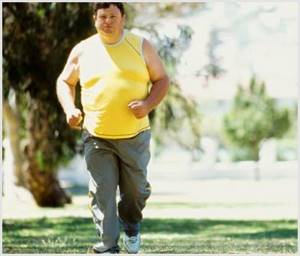
Cellulite is a disease of subcutaneous fat as a result of metabolic disorders in tissues. The reason for the change in metabolism and the formation of fibrous bridges in the fat layer under the skin is the excessive accumulation of free radicals, in other words, under-oxidized metabolic products. With intense daily training, free radicals do not have time to break down and cause cellulite.
How to run correctly
A few rules:
- Give your body an hour after waking up to prepare for physical activity. During this time, you can do hygiene procedures, have a light snack, and walk to the stadium at a leisurely pace.
- Create a running schedule.
- Each time, start with a warm-up (at least 15-20 minutes), and end with a cool-down. The last exercises should be done gradually reducing the load on the heart.
- Choose a place away from roads with fresh air.
- Breathe correctly. Inhale through your nose, it should be short. Exhale – twice as long, through the mouth.
Refrain from intense training during menstrual periods. Movement can lead to uterine bleeding and increased pain. Running is also prohibited for pregnant women and immediately after childbirth.
Pay more attention to your breathing; it is more difficult for girls to keep it in a certain rhythm than for guys. If your goal is to burn excess fat, then you should move slowly but for a long time.
Rules for a man
The stronger sex has a high risk of developing flat feet if the movements are performed incorrectly. The weight of the body should be distributed evenly over the entire foot using a roll - from landing on the heel to a smooth transition to the toe. The second tip is to choose shoes with good shock absorption and orthopedic insoles. Running in the morning is good, but only in good running shoes. Sneakers are absolutely unsuitable for this.
Another recommendation - if you want to have sculpted muscles and not lose weight, then limit yourself to 20-30 minutes, but give it your all.
Men have a harder time with leg injuries, especially muscle strains, so don't skip the warm-up.
Celebration or struggle?
If you have found out that running is not contraindicated for you, and now you want running to be beneficial, you need to decide on the strategy for your runs: running as a holiday or running as a struggle.
Depending on your attitude and training simulation, your body will produce different hormones that will affect your health differently.
A sports culture is now actively being formed in Russia. Everyone wants to run harder and faster, attend every race in the area and endlessly update their personal best. If you constantly go out to train in such an intense mode, running ceases to be beneficial to health. Instead of the desired endorphin, we will tire our body more and more, producing cortisol (stress hormone). And then sport, instead of a holiday, will become sheer stress and struggle for us. This model of the training process is traumatic and demotivating.
When choosing one running strategy or another, it is important to remember proper recovery. Never try on the training of experienced athletes!

Professional athletes train, rest, eat and then train again. And amateurs train, wanting to run a half marathon in 1 hour 30 minutes or a “ten” marathon in 35 minutes, while still going to work and doing household chores, which means they cannot receive full recovery a priori. Thus, they drive their body into terrible conditions of chronic fatigue.
A positive running model is about proper recovery.
For running to be beneficial, stress must be measured. High-quality recovery is mandatory: sleep at least 8 hours.
Is running in the morning beneficial: tips for beginners
If you are new to this activity, you should start exercising gradually, otherwise it can lead to sprains, muscle pain, calluses on the feet and increased fatigue. After such a set, you won’t want to repeat your morning “feat” the next day.
We invite you to familiarize yourself with the influence of creatine on male potency, side effects and reviews
Enter the sport gradually, start with a short workout, alternate jogging with walking, but don’t stop. Our recommendations:
- Before you start, evaluate your preparation - whether you have trained before, what is the interval between these periods.
- Are you overweight? Usually, overweight people have a more difficult time taking their first steps.
- Buy sneakers with good cushioning and sportswear made of breathable fabric with ventilation. Don't skimp on ammunition. If you are starting in winter, we recommend ordering equipment from the Stayer online store. In the catalog you will find a large selection of insulated jackets and trousers, which are characterized by wear resistance and the necessary air circulation.
- Spend the first 10 minutes warming up. Without warming up the muscles, there is a high probability of damaging the joints.
- Remember that running is also an exercise, which means it has its own execution technique that you need to follow.
- Take your heart rate before and after your run, or invest in a heart rate monitor.
We will also give some recommendations that will help you get the job done and not give it up halfway.
The habit is developed within three weeks. Exercise daily, force yourself to get out of bed early, so that after 21 days it becomes a pleasant and easy ritual. Come up with a reward for keeping your word to yourself.
Is it worth running in the morning if the bed is much warmer and more comfortable? But the question changes dramatically if a friend, colleague, neighbor or other half is already waiting for you on the street. You won't want to let your companion down or show yourself in an unfavorable way and be forced to go.
It’s always unpleasant to lose, and if you, for example, gamble money, it’s also costly. It is advisable to argue with someone who will control you. It could be a family member or neighbor who is always looking out the window. This will be an additional incentive for new achievements on the treadmill.
The body will begin to consume energy from muscle tissue, rather than from fat reserves. A complete lack of food is contraindicated both for those who want to lose excess weight and for those who combine cardio with strength training.
It is best to divide the first meal into two portions - eat a small one after waking up, and a second one 40 minutes or an hour after exercise.
What to eat beforehand
To lose extra pounds, eating heavily is not recommended. You should drink a glass of sweet tea with a small whole grain bread. This amount will be enough to awaken the metabolism, but not enough to maintain energy - the body will have to use fat reserves.
Other athletes can choose something from the list for breakfast:
- porridge - oatmeal, rice, buckwheat, pearl barley, semolina, wheat;
- sandwich with fresh vegetables;
- omelette with bacon;
- sports nutrition;
- Bananas, grapes and dried fruits are good fruits.
The main task is not to accept quick sandwiches, that is, you need to give up baked goods and baked goods. The useful elements should be enough for the entire cardio workout.
Be sure to eat breakfast after your run, as this will close the carbohydrate and protein window. If this is not done, the body will begin to consume muscle mass as an energy source. Even those who are losing weight should not be afraid of eating, because cardio speeds up metabolism.
Three rules remain:
- Avoid eating for the first 40-60 minutes. This time can be spent leisurely returning home and showering.
- Balance your diet.
- Avoid baked goods and excess sugar - these are “empty” calories that have no benefit.
Conclusion
Is running every day good or bad? This question worries every lover of a healthy lifestyle who decides to jog. How to get the best results from training and avoid negative consequences? Here are some recommendations:
- Before training, you need to familiarize yourself with the proper running technique.
- It is better to jog 2-3 times a week. On other days, walking and brisk walking are helpful.
- The average training time is about an hour. Longer runs are classified as high-intensity physical activity, while shorter runs are not effective enough and are used when the body is poorly trained.
- Running equipment should be selected in a professional store, primarily sneakers.
- Before starting classes, you must consult a doctor and undergo the examination prescribed by him. Some diseases, such as oncology, hypertension, infections, high myopia, pathology of the musculoskeletal system are contraindications to training.
In the last decade, information has emerged that intense physical activity, even in amateur sports, can lead to disability and shortened life expectancy. On this wave, fans of laziness have appeared who believe that it is good for health. Are they right? Read about this in my next article.
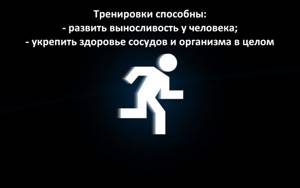
If you want to run, then train correctly. Only in this case can you get good results. Replace running with walking or even simple walks in the fresh air more often. There is wonderful Nordic walking.
The health effects of running have actually been exaggerated.
Of course, physical activity is needed. If you sit in the office all day and don’t stress your body, you will simply get sick. But excessive jogging in the form of daily morning workouts will also not give you health, and can even be harmful. There must be moderation in everything.
Remember, you cannot escape from a heart attack by running. If after running training you come to work and start to get nervous, worry, i.e. experience stress, diseases, including heart diseases, are guaranteed for you.
To avoid stress, and therefore become healthy, you don’t need running, but energy meditative practice or, for beginners, just meditation.
You need to be able to relax. Or lazy, you say. We will talk about this in the next article.
See you on the treadmills for better health, but not for athletic performance.
And at the end I give you a gift. Beautiful music.
Is running good for the heart?
Studying the effect of cyclic load on the work of the heart, it was concluded that regular exercise leads to an improvement in its activity. For example, during running, the heart muscles contract 2-3 times more often, which leads to its training. Since the main organ of the vascular system consists of striated muscles, regular jogging leads to its hypertrophy - an increase in the volume of the heart.
It is worth noting that there are two types of hypertrophy:
- L-hypertrophy – increasing the volume of cavities and improving organ function.
- D-hypertrophy – thickening of the walls and destruction of the organ.
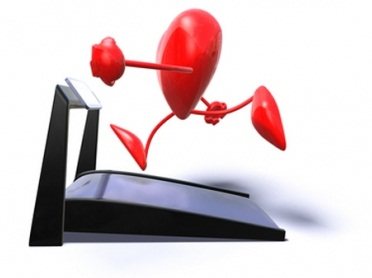
The appearance of hypertrophy causes the appearance of positive factors:
- The circulatory system improves
- Increases oxygen saturation of cells
- Increases the body's immune response
- Metabolism improves
- Sports bradycardia appears
Bradycardia is a slow heart rhythm. Normally, the contraction frequency is 60-80 beats. If bradycardia is present, the pulse may be below 50 beats. Usually, a slow pulse is recognized as a disease, since the cause is most often insufficient stimulation of the heart muscle by electrical impulses. At the same time, the heart is of normal size. Sports bradycardia is NOT a disease, but occurs due to an increase in the volume of the heart. A large volume allows you to eject more blood at a time, freeing the heart from working for a long time.
The result of hypertrophy due to regular jogging is an increase in cardiac pause, during which an important organ of the vascular system rests. The appearance of hypertrophy and sports bradycardia allows us to give it a name - a strong heart.
Running and losing weight
Run to lose weight, or lose weight and then run?

Dr. Kadlubinsky is for an integrated approach and against specific diets. The number of calories consumed should be less than those that a person will spend. In other words: eat less and move more. Also, the key to successful weight loss while maintaining caloric intake is good sleep.
Healthy sleep is from 21-22 pm to 6 am.
If a person is overweight, then Nordic walking and slow jogging will help you lose weight. During this time, you will lose weight, strengthen your musculoskeletal system, and then you can move on to more intense running training.
After sleep
Let's see if running in the morning is good for men.
Morning jogging has a number of advantages over evening jogging. It has been experimentally proven that people who exercise in the morning get used to it faster. In the evening you have to force yourself to go for a run, which leads to frequent refusals from further training.

It is morning jogging that charges the human body with energy for the rest of the day.
People who exercise in the morning lose weight faster by speeding up their metabolic processes. But after a short period of time, you will need a full breakfast, since morning jogging improves your appetite.
The optimal time for morning training is between six and seven o'clock.
To reduce the risk of harm to health through physical activity, it is necessary to consult a specialist before starting exercise and undergo an examination to exclude contraindications.
We invite you to familiarize yourself with Types of erection in men and the physiology of the process
Training should begin with a warm-up or ten-minute walk.
It is necessary to choose park paths or playgrounds as a running area, avoiding roadways.
Clothing should be made from natural fabrics to absorb sweat, and shoes should have shock-absorbing soles.
A prerequisite for playing sports is proper nutrition. Running immediately after eating is prohibited. You need to drink enough water. It is advisable to take a few sips before, during and after a run.
If a person is sick with a viral infection, you need to wait until the body is fully recovered and restored before resuming training.



